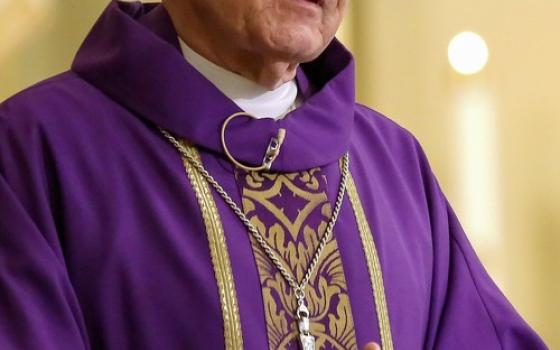Have young adult Catholics lost their way?
Has the church lost twenty-somethings?
These questions and several others were explored this past weekend at a forum and conference entitled “Lost? Twenty-Somethings and the Church” at Fordham University.
Apparently, these concerns are on the minds of many, since conference organizers had to open up a second auditorium with live web-streaming to accommodate the overwhelming number of registrants.
Seven different panels of experts were appointed to help sort through these matters. The panelists chosen to speak represented a comprehensive cross section of interested parties: theologians and sociologists; campus ministers and pastoral associates; and editors of magazines and websites.
The result was a veritable fantasia on the state of young adult Catholics in the U.S.
There were discussions on the liturgical needs and the social challenges of twenty-somethings. Some panels considered the distractions of our media-soaked culture, while others explored the impact of casual sex and later marriages on young adults’ ties to Catholic communities.
These conversations were rich enough to dedicate several columns of reflection on them, and this I plan to do. But first, it is important to grasp the gravity of the situation.
The conference began with a remarkably spirited discussion of statistics. In his opening presentation, James Davidson, professor emeritus of sociology at Purdue University, offered an intriguing interpretation of this ostensibly dire statistic: Two-thirds of Americans raised Catholic no longer attend church. Of that two-thirds, one-third no longer call themselves Catholic; the other one-third call themselves Catholic but do not participate in the church.
Davidson argues that only those who have made a “clean break with the church,” that is, have either become atheists or converted to another denomination, should be considered “lost” to the Church. Invoking Canon Law, he asserts that Catholics who consider themselves unaffiliated or agnostics should still be considered Catholic. Though they no longer attend Mass and disagree with any number of doctrines, they will still seek a priest for baptisms and last rites. They are not lost, but “more like less involved affiliates,” Davidson argues.
Davidson pointed out that the church suffered a similar decline in the participation of young adults during the late nineteenth century, particularly during the papacy of Leo XIII. It wasn’t until the 1930s that attendance grew stronger and reached it apex in the 1950s.
One contributing factor to this boon was the influx of immigrants to the U.S. Many of them suffered persecution and found a refuge in their parish communities. Among non-immigrants, the reining culture of conformity, sometimes fueled by guilt and fear, also gave Catholicism a particular appeal.
Twenty-something Melissa Cidade, who serves as director of Pastoral Assistance Surveys and Services at the Georgetown’s Center for Applied Research in the Apostolate (CARA), shared in Davidson’s hopefulness.
Studies performed by CARA suggest that the belief systems of the millennial generation are about the same as those of the Vatican II generation. The difference between the generations lies in religious behaviors.
Contrary to popular belief, Cidade asserts that it isn’t the church’s doctrines on social issues like abortion, gender equality, and gay marriage that keep twenty-somethings from regular church attendance. The culprit, she argues, is that “the church’s message isn’t salient for them…They aren’t getting a message worth getting out of bed for.”
Paraphrasing Jesus’ parable of the sower, Cidade believes, “twenty-somethings are fertile ground -- and we are called to plant the seeds.”
But are these appeals to Canon Law and CARA studies smoke and mirrors that mask a church teetering on a demographic precipice?
Fellow panelist Robert Putnam would emphatically argue yes. Putnam, who is Malkin Professor of Public Policy at Harvard, co-authored the new book American Grace: How Religion Divides and Unites Us.
The book is based on two of the most comprehensive surveys of religion and public life in the U.S. Its findings that churches are hemorrhaging young adult members sent shockwaves throughout many religious communities. Aftershocks could be felt in the Fordham auditorium as Putnam -- in a collegial, but blunt tone -- called the theories of Davidson and Cidade “far too optimistic” and “seriously underestimating the problem.”
Putnam, the only non-Catholic on the panel, shares the widely held belief that without the influx of Latino and Latina immigrants -- who make up between 48 percent and 58 percent of practicing young adult Catholics -- the church would be facing immanent collapse.
“The recipe for a healthy church is large families and deep involvement,” Putnam asserts.
Putnam argues that two-thirds of Catholics are lost because “they are not taking the sacraments and they are not raising their kids Catholic. Since they are neither participating in the life of the church nor contributing to it financially, it would be foolish to call them Catholic.”
Regardless of the definitions stated in Canon Law, Catholics of the unaffiliated or agnostic stripe cannot and will not sustain the church’s future.
The remainder of the conference considered the reasons behind these sobering statistics.
But one particular question loomed over each panel discussion: how do we get twenty-somethings to go to church?
One twenty-something, practicing Catholic suggested offering a social component in addition to Mass -- like a dinner, or a movie-night, or even a happy hour. A thirty-something parish minister insisted that vastly improved homilies and music were essential to making liturgy appeal to young adults. Another thirty-something encouraged priests to give an explicit message of welcome to all of those gathered at Mass. A campus minister urged a major overhaul of Catholic religious education, since no substantive program ever replaced the abandoned Baltimore catechism.
As each participant ably gave their insight into this question, a different set of questions entered my mind:
Was there ever a time that the church strove to appeal to the personal and spiritual needs of the faithful? How many Catholics in the last seventeen centuries have attended Mass out of genuine desire or enjoyment?
Before the reforms of the 1960s, how many Catholics attended Mass in the hope of hearing an interesting sermon or exquisitely, moving music? Wouldn’t it be more accurate to say that throughout most of the church’s history, Catholics attended Mass because they believed that the fate of their souls depended on it?
Because of its spiritual power, the church has never had to attract the faithful to Mass. Many families went to Mass because not to attend was a sin. Whether it appealed to them or not, young people went to church because their families expected it of them. The church did not have to be particularly inventive or interesting when it came to the education of Catholic youth. The Baltimore Catechism provided absolute answers to all questions about the faith.
Even those who longed for the changes of Vatican II also grew up in this world of conformity and devotion to the church. And though many of them later rejected these strictures, their identities nonetheless were formed by prescribed church attendance and religious instruction. For this reason, many chose to continue to attend Mass after the reforms of the 1960s.
But their children and grandchildren did not have their identities formed by the teachings and rituals of the church. As a result, new generations do not have a stake in the church and its future. And they are unlikely to make a commitment to something they do not enjoy. They’re overscheduled enough as it is.
The Fordham conference demonstrated that young adult Catholics have a whole new set of needs when it comes to participating in the church. And as a result, the institutional church is being asked to do something that it has never had to do before: it has to work at bringing people into its pews.
No longer can the church rely on the need for a refuge, or on the desire for conformity, or the fear of damnation to ensure lay participation. The church suddenly finds itself having to make an effort at being not only welcoming, but intellectually stimulating and liturgically meaningful to new generations of Catholics who were not formed in its tradition.
It has to develop a catechesis that challenges the mind, feeds the spirit, and engages the inquisitive nature of young people.
Because of the way Catholic leadership is structured, changes as simple as being more welcoming or offering better homilies lie squarely on the shoulders of the clergy.
One wonders whether they are equipped to fulfill these needs. Their numbers are dwindling, too. And most of the young men being ordained are far more interested in rubrics and orthodoxy than they are in potlucks and hospitality.
The problem may not be that twenty-something Catholics have lost their way to the church. Rather, the church seems to have lost its way to twenty-somethings.
If young adult Catholics are fertile ground, the sower is going to need directions to the field.
[Jamie L. Manson received her Master of Divinity degree from Yale Divinity School where she studied Catholic theology and sexual ethics. Her columns for NCR earned her a first prize Catholic Press Association award for Best Column/Regular Commentary in 2010.]
| Editor's Note: We can send you an e-mail alert every time Jamie Manson’s column, "Grace on the Margins", is posted to NCRonline.org. Go to this page and follow directions: E-mail alert sign-up. If you already receive e-mail alerts from us, click on the "update my profile" button to add "Grace on the Margins" to your list. |




